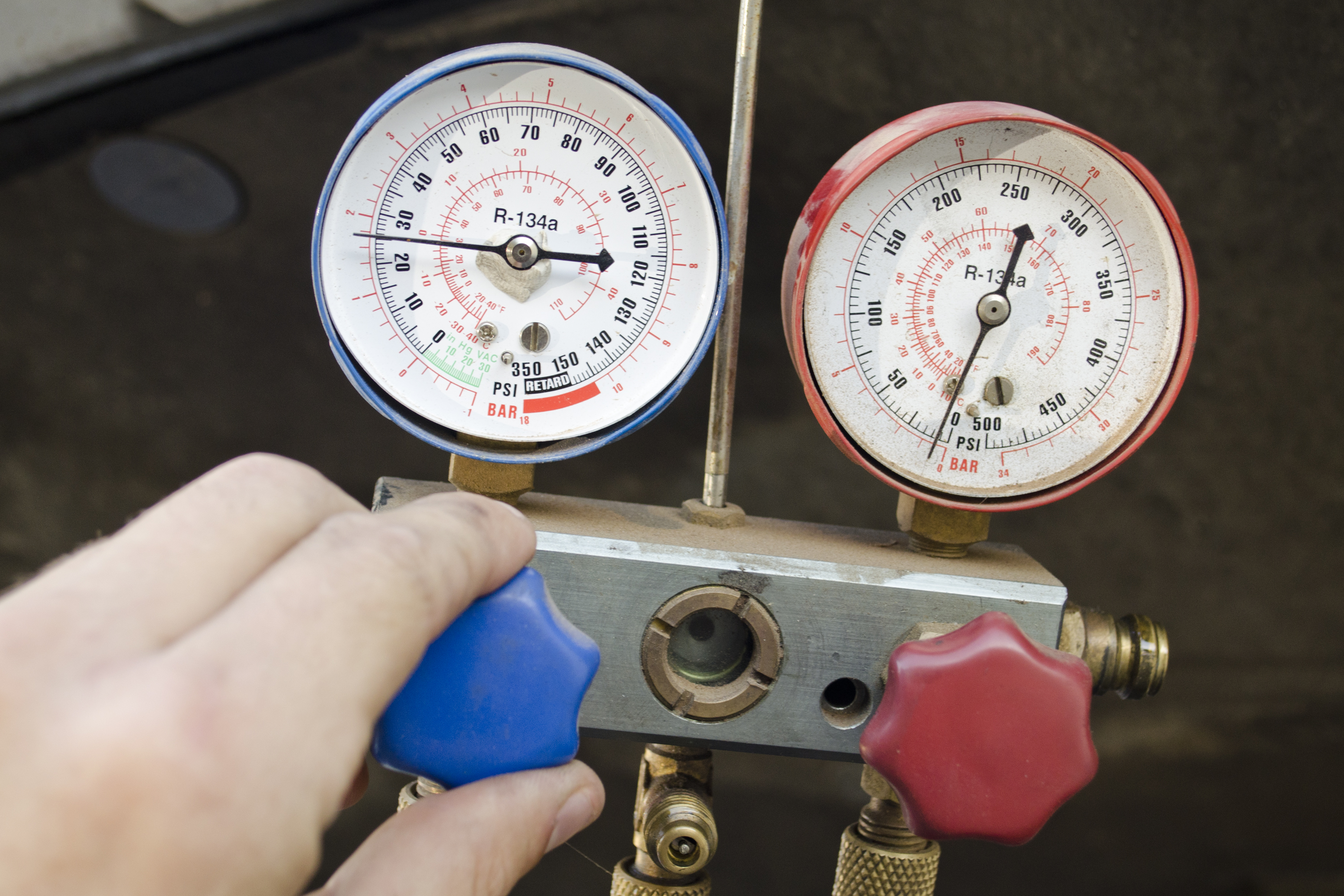It is important to vacuum an air-conditioning system to remove any air or moisture that may damage the system in the long run. Moisture in the AC system is a serious problem, because moisture reduces the performance of the AC system and condensation of water can cause the AC system to freeze. Condensed water particles corrode the AC system and cause long-term damage. Creating a vacuum deep enough to boil moisture away by using a vacuum pump on a regular basis is an effective, low-cost method of maintaining a healthy AC system. Pumps can be purchased or rented, if you don't want to make a permanent investment.

Turn off the air conditioning in the car and switch off the car engine.

Hook up the refrigerant gauge manifold set. The pump hose should be attached to the low-pressure port of the refrigerant gauge. The hose is attached, in simplified terms, to the port that is found in the middle of the gauges. This step is very important in vacuuming the AC system. It helps maintain the vacuum even after the pump shuts down. Refrigerant can be added only after the correct level of vacuum is maintained.

Screw the AC vacuum pump to the center valve of the refrigerant gauge manifold set. Keep checking the gauge till the vacuum level reaches 27 Hg. Allow the pump to run for no less than 30 minutes.

Close the valve that goes to the gauge. Turn the pump to the off position. Leave the equipment in place, without running the pump for another 30 minutes. After this 30 minutes of idle time, check to see if the vacuum level remains at 27 Hg. If the level is less than 27Hg, then there is a leak in the system that needs to be fixed before moving to the next step.

Disconnect the pump hose from the pump and place in a can of refrigerant or freon after the proper of level of vacuum is present and there are no leaks detected. Start the car. Now, turn on the air conditioning system. Open the low-pressure manifold slowly to allow the refrigerant, usually Freon, to flow into the system.
